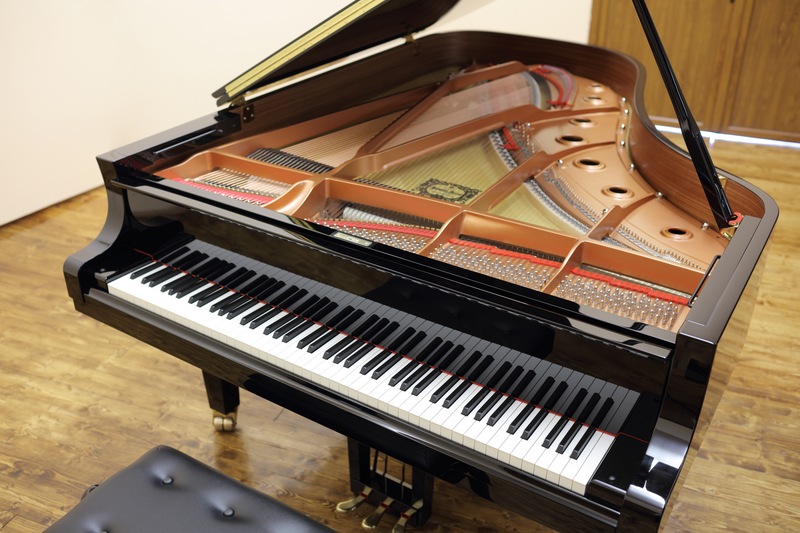The History of Piano Design and Why It Matters for Movers

At Modern Piano Moving, we've handled every shape, size, and style of piano under the sun. From compact spinet pianos to mammoth concert grands, we've moved them all. But not every piano is created equal when it comes time to transport them. The history and evolution of piano design has resulted in drastically different instruments that require specialized moving techniques.
In this blog post, we provide a quick history lesson on the major developments in piano design over time. We'll discuss how pianos changed and the implications for transportation and handling that piano movers must consider. Read on for insights into why the history of piano design still matters today!
The Invention of the Piano
The piano's origins date back to the early 1700s with the invention of the pianoforte. Italian instrument maker Bartolomeo Cristofori created the first pianoforte around 1700, though builders kept the innovative instrument a secret for some time. This early piano used hammers to strike the strings, creating the ability to play dynamics from soft (piano) to loud (forte).
The pianoforte revolutionized music with its expressive range and became immensely popular later in the 1700s. But the instruments were still small, lightweight and rectangular, similar to a harpsichord. They used thin strings at low tension levels. These early pianoforte designs were relatively easy to move thanks to their manageable size and weight.
Iron Frames and Bigger Sound
In the early and mid-1800s, piano design saw major changes with the introduction of metal parts. An iron frame supported thicker strings at higher tensions, allowing a more powerful sound. The sturdier metal frame increased a piano's internal forces from around 10 tons up to 20+ tons.
The use of metal plates also enabled bigger instruments up to around 7 feet long. By the late 1800s, modern large uprights and grand pianos emerged, increasing weights up to 600-900 lbs. The iron frame set the course for larger, heavier pianos that required more robust transportation methods without cracking the metal structure.
Modern Concert Grands
At the turn of the 20th century, piano design reached its pinnacle of power and size. Modern concert grand pianos emerged stretching 9-10 feet long and weighing up to 1200 lbs. Steinway built their massive D concert grand in 1884 capable of projecting sound through a full symphony orchestra.
These giant pianos created new challenges for movers to safely lift, handle and transport them without damage. Their immense size also requires breaking down legs, lids and pedals to fit through doorways. Delicate care prevents cracks in the huge solid maple and spruce soundboards. Proper distribution of weight prevents bending and warping.
Alternative Designs and Hybrids
While large grand pianos dominated, inventors also tinkered with more compact, affordable designs. The early 1900s saw altered piano forms emerge using new materials and arrangements.
Upright pianos shrunk to small studio sizes around 40 inches tall. Spinet and console models used less expensive woods and vertical string alignments to lower costs. Digital pianos also emerged in the 1980s with electronic rather than mechanical parts.
In the 21st century, hybrid pianos combine traditional acoustic actions with digital features for tonal versatility. Self-playing systems have been incorporated which require delicate handling so key actions aren’t jarred out of regulation during moves.
How Piano History Impacts Movers
This quick journey through piano history shows how instrument size, weight, materials and complexity evolved substantially over time. Today's piano movers must handle museum-worthy antique instruments as well as brand new models incorporating the latest designs and technology.
Understanding this history allows movers to assess pianos and determine proper handling, disassembly, padding and transport methods. A 220-lb nineteenth century upright will require different moving techniques than a 1200-lb modern concert grand, for example.
So while early piano moving simply involved rolling small instruments outdoors, today's movers have a much greater diversity of forms to accommodate. The evolution of piano design created new specialized skills for transportation without damage.
At Modern Piano Moving, we study the history and structure of any piano we relocate. Our veteran staff understands how to safely transport diverse instruments with challenging weights, dimensions, materials and assemblies. Every piano has a story behind its creation that informs how we move it.
The Next Chapter in Piano Moving
The story of piano design innovation continues today with new sizes, electronics and custom styles. Modern Piano Moving keeps pace with these developments so we can transport any piano, old or new. History provides essential context for our work.
Understanding how pianos came to exist in their present forms allows us to see into the future. Companies like ours must continually adapt our skills and tools as piano manufacturers dream up new creations. The evolution of pianos goes hand-in-hand with the evolution of piano moving itself.
So while early movers could get by with horse-drawn carts and pulley systems, we rely on specialist equipment, climate controlled trucks and expert handling techniques. The history of piano design matters not just as interesting trivia, but as the foundation of our crucial service transporting these instruments safely today and for generations of pianists to come.
Bookmark & Share
User Comments
Be the first to comment on this post below!
Previous Article
Most Popular Articles
- How Much Does It Cost to Move a Piano Long Distance?
- How Heavy Is A Grand Piano?
- Easy Pop Songs to Play on the Piano
- 10 Reasons to Hire a Professional Piano Moving Company
- The Best Spots for Your Piano
- Mistakes to Avoid When Moving a Piano
- How to Restore Yellow Piano Keys
- What to Do with Your Unused Piano



